Cable ties for industry
From standard cable ties to advanced fastening solutions
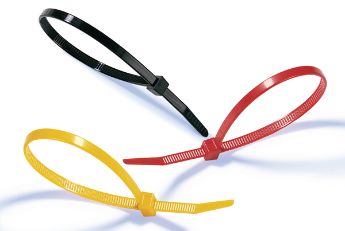
Cable ties have to meet a broad range of requirements because they are used in a wide variety of applications – from the simple bundling of cables with cable ties to very specific uses of cable ties under extreme conditions.
HellermannTyton offers a comprehensive portfolio of fastening solutions for all industrial demands, including: reusable cable ties for temporary fastening, coloured cable ties for colour coding, cable ties with fixing elements for attachment to plates, weld studs, panel edges or stainless steel cable ties for harsh environments.
Get an overview of our various zip tie solutions here on this page.
Product innovation: soft ties

The Soft Grip series features soft ties for very sensitive and soft bundles. Thanks to their soft TPE inner layer, these ties perfectly protect against vibration and rattling noises. In addition, they provide high mechanical tensile strength.
The 2-component soft tie comes with three different foot parts for a wide range of applications. Foot parts can even be customized to individual customer requirements.
All in all, Soft Grip Ties thus can help to reduce the inventory of individual components, the complexity of the installation itself and also costs.
Click here for more information.
Product overview
HellermannTyton zip ties are available:
In a variety of sizes, with inside serration, outside serration or without serration, in different colours, made of 100% high-quality plastic – easily applied by hand or with a processing tool.

Special cable ties that HellermannTyton offers include:
- Weatherproof and impact-resistant ties
- High temperature cable ties
- Low fire hazard cable ties
- Reusable or releasable zip ties
- Cable ties for parallel routing
- Metal detectable cable ties
Metal detectable zip ties
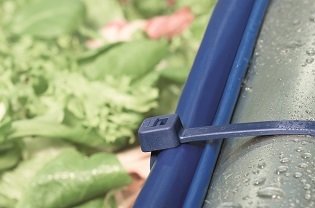
The metal detectable MCT series was specially developed for use in the food, beverages and pharmaceutical industries. It is ideal for the installation of wiring in and around open production lines.
MCT cable ties are manufactured in a unique process that involves the addition of metal particles to the plastic resin. This makes it possible to detect even small, cut-off sections of the cable tie with commercially available metal detectors.
These zip ties can be used to help meet HACCP requirements. The colour of the zip ties supports visual recognition, further reducing the risk of contamination.
High temperature zip ties

Peek cable ties for high temperature applications are specially designed for the most demanding environments. They are popular in the aerospace, railway, offshore, power, medical engineering and automotive industries. PEEK thermoplastic advantages at a glance:
- Wide temperature ranges from 55° C to +240° C
- Combines the performance of a metal tie with the convenience of a plastic cable tie.
- Excellent chemical and irradiation resistance
- An lightweight alternative to metal solutions
Reusable zip ties
Releasable cable ties for temporary fixings

Many applications require a temporary fastening solution: for example, in stage construction, at trade fairs or when bundling telephone, fibre optic and network cables. Reusable cable ties can be easily opened and closed after installation. They are also available with very flexible characteristics. An application example is the securing of tree saplings to supports in gardening and landscaping.
Reusable zip ties are available in different designs, materials, lengths, colours and locking mechanisms: lever, side lock, flexible rubber closure, hook-and-loop or wing release.
How to use reusable cable ties?
Reusable zip ties are available in different designs for a broad range of applications. Get an overview and see how they work – in this video:
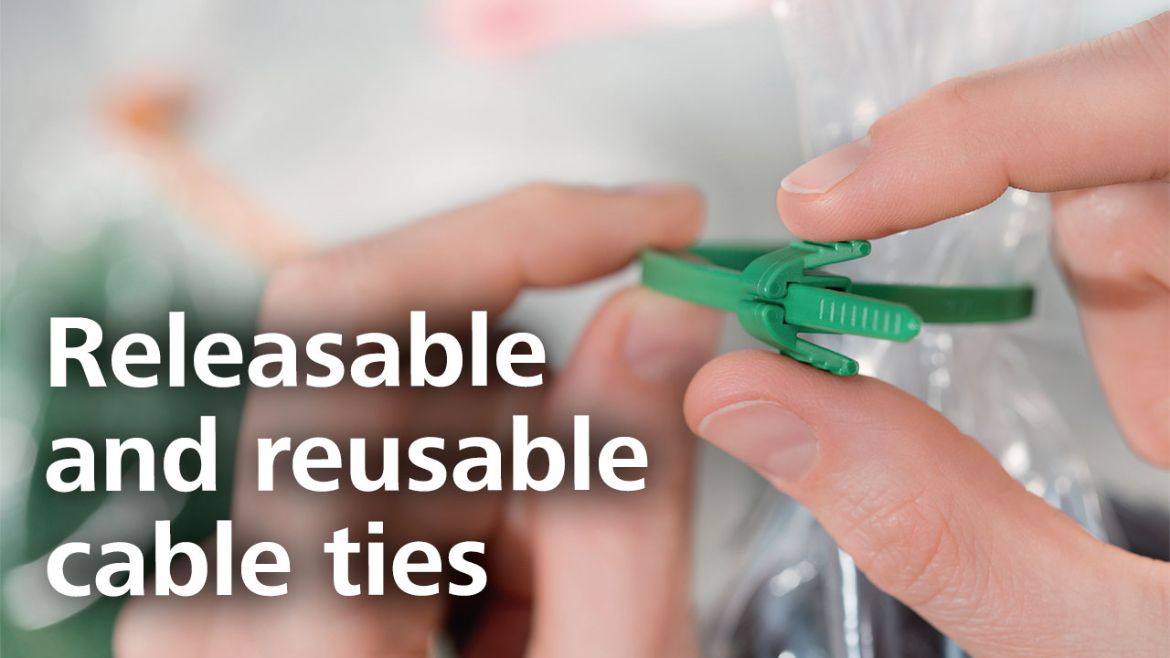
Soft, removable hook-and-loop zip ties

The "soft" TEXTIE is ideal for use around telephone cables, fibre optic cables and network cables. In addition, these hook-and-loop material ties are perfect for use in temporary installations such as stage construction or prototype cable harnesses.
TEXTIE can also be used in many household and office applications. It is quick and easy to process by hand and can be reused up to 400 times. Hook-and-loop ties are suitable for both indoor and outdoor use and are available in different colours and sizes.
Reusable zip tie with lever lock

The ORF series with lever lock has been designed for easy removal and reuse without a knife or side cutter, but conveniently with a lever.
- Designed for easy release with one-hand
- Suitable for temporary colour coding
- Gentle on the bundled material thanks to outside serration
In addition to different sizes and the colours white and yellow, the ORF series also includes a black UV-resistant variants for outdoor use.
Coloured cable ties
Different cable tie colours for individual applications

The classic black cable tie is still one of the most popular cable ties. But HellermannTyton also offers customers a wide variety of zip ties in different colours – including red, green, brown, white and transparent.
These zip ties are ideal for colour coding: For example, workers can be helped to find certain parts more quickly or to assign them precisely. This plays an especially important role in the automotive sector but also in lots of other industries.
By the way, some industries prefer certain cable tie colours: In the food industry, for example, the colour blue is often preferred, while pink plays an important role in the aerospace sector.
One of many reasons why HellermannTyton offers abroad range of coloured cable tie solutions.
Low profile head zip ties

LPH cable ties with flat heads take up little space and are therefore the ideal choice for tight installation conditions. But also wherever injury risks need to be minimised: for example on children’s play equipment where foam cushions are fastened to supports and railings.
Thanks to rounded edges and a flat head, children can play safely without getting caught on a protruding cable tie head. Plus, the outside serration ensures that the soft foam padding is not damaged when the zip ties are tightened.
Low-profile head cable ties are available in various colours: in addition to red, green and brown, the PE400 zip ties for example are also available in natural (transparent) and black.
Learn more about low profile cable ties for playgrounds and suitable accessories.
See here how to close a cable tie with low profile head

White cable ties for low smoke generation

Wherever safety regulations are high and the reduction of smoke and hazardous fumes is required, the white T-series cable ties made from PA66V0 material are the ideal choice.
Thanks to its compound properties they significantly reduce the development of toxic gases and corrosive acids in the event of fire. In addition, their PA66V0 material meets UL94 V0 requirements.
With their high safety level, these cable ties are particularly popular in the public sector – especially in the railway, construction and defence industries.
Cable ties with fixing elements
Zip ties for routing, bundling and securing
Many industrial applications require bundled cables, wires, pipes and hoses to be directly attached to a panel or frame edges. HellermannTyton offers various one-piece and two-piece fastening solutions for round and oval holes, bolts and edges – in various sizes, orientations and colours.

Cable ties with specialised fastening elements are frequently found in vehicles and machinery, for example:
- Automotive
- Buses and trucks
- Defence industry
- Rail transport
- Aerospace
- White goods
- Electrical wholesale
Cable tie fixing for round and oval holes
Many applications include round and oval holes to ensure reliable cable routing at predetermined fixing points. The zip tie and fastener are pre-attached to the wiring harness. The foot part of the fastener can then be easily inserted into these holes during final assembly.
A diverse range of mounting solutions is available for almost any hole size and panel thickness. Application can be simply done by hand, without the need for special tools. The
secure locking can be heard and felt by the user with a "click".
Fixing ties for weld studs

Fixing ties with weld stud mounts are primarily used in the automotive industry.
However, they are also used in all other areas where cables and wires have to be guided safely by means of weld studs or threaded bolts.
These ties are available with fixed heads (with a defined position) as well as with flexible heads (with room to move).
Cable ties for edges

In addition to fastening solutions for plates and weld studs, HellermannTyton also offers cable ties with fixing elements for edges.
Learn more about the different applications where EdgeClip solutions are suitable on the cable clips for edges Competence Page.
Soft ties and mounts for studs, holes and for screw fixing

The 2-component Soft Grip Tie was developed for professional, flexible and simple bundling of smooth, sensitive bundling material. With its soft TPE inner layer Soft Grip is well suited for plastic tubes or silicone cables – especially for the field of fluid management.
Thanks to its three various matching mounts, the soft tie can be attached in almost any application. The Soft Grip Mounts at a glance:
- Soft Grip Mount for screw fixing
- Soft Grip Mount for studs (weld stud)
- Soft Grip Mount for holes (arrowhead)
Simple to use: The soft tie is equipped with a pre-locking function. This enables quick and easy pre-assembly of the tie, to which the bundled goods can then be subsequently attached. Another benefit is that the soft tie can be opened again with a screwdriver so that the mounts can be conveniently removed by hand. Perfect for maintenance.
This soft tie combines material-protecting properties with high tensile strength. This guarantees a gentle and at the same time firm hold without lateral movement for all bundles up to 25 mm.
Stainless steel cable ties
Metal zip ties for challenging environments
Steel zip ties are used in a variety of industrial and commercial applications where tensile strength or extreme material requirements under harsh conditions are needed. HellermannTyton offers various stainless steel cable ties that are particularly popular on ships, in tunnels, mines and in the petrochemical industry. Further markets & applications:

- Marine: Stainless steel cable ties are resistant to corrosion, making them ideal for use on boats, ships, and offshore oil rigs.
- Outdoor installations: Stainless steel cable ties resist UV aging and weathering, making them reliable for securing wiring and identification marker plates in outdoor settings like traffic signs and signals or telecommunications equipment.
- Food and pharmaceuticals: Stainless steel cable ties are durable, non-toxic, withstand heat sterilisation processes and aggressive cleaning chemicals. They can support HACCP quality assurance processes.
- Heavy-duty applications: Stainless steel cable ties are strong and suitable for securing cables and tubing on trays and racks in heavy-duty vehicles, aerospace and railway applications and also for securing pipe insulation jackets in high temperature applications or for aerial support of power cables.
- Other applications: For example securing cables, wiring and pipes in road vehicles, aerospace, and railroad industries as well as in construction and mining.
Manufactured in the United Kingdom, HellermannTyton MBT cable ties offer excellent value for money with the benefit of regional supply and immediate availability.
MBT stainless steel cable ties with secure metal ball-lock mechanism

MBT metal cable ties are the best solution for strength, durability, and resilience in even the harshest environments. Made from 304 or 316L marine grade stainless steel, these cable ties offer high performance and reliability for demanding applications.
Available in a wide range of sizes, the MBT-Series is engineered to withstand extreme conditions, including heat, corrosion, radiation, vibration, chemicals (acid), and weathering or exposure to UV and industrial pollutants. With their non-burning properties and ability to endure fire and high temperatures up to +538°C, they ensure safety and security in any application.

Product benefits:
- A smooth surface and rounded edges ensure ergonomic safety during use
- High loop tensile strength ranging from 540 N to 2,700 N
- Patented non-slip stainless steel ball-lock mechanism prevents loosening under tension
- Compliant with maritime standards such as DNV, ABS, and Bureau Veritas
They meet the requirements for metallic, non-metallic and composite cable ties and their associated fixing devices as a means used for managing or securing the wiring systems in electrical installations specified in of the IEC 62275 and IEC 60092 applicable to electrical installations for use in ships.
MBT coated cable ties to prevent contact corrosion

Adding the LFPC Protective Channel made from polyolefin or using the SS316L polyester-coated MBT versions when installing on dissimilar metals and smooth surfaces reduces the risk of corrosion. Polyester-coated metal cable ties also offer additional advantages.
Product benefits:
- Improved protection against corrosion
- Enhancend installation comfort at low temperatures
- Suitable for sensitve bundles
Stainless steel 304, 316 and 316L cable ties
Polyester coating or polyolefin protective channels can prevent contact corrosion between dissimilar metals, for instance aluminium or zinc, but this does reduce its maximum operating temperature range.
| Features | SS304 | SS316 and SS316L | SS316/ SS316L coated in polyester |
|---|---|---|---|
| Loop tensile strength | excellent | excellent | excellent |
| High temperatures | excellent | excellent | limited |
| UV resistance | excellent | excellent | good |
| Salt corrosion | good | excellent | good |
| Contact corrosion | limited | limited | none |
| Chemical resistance | excellent | excellent | good |
| Flammability | none | none | UL94V-2 |
All grades 304, 316 and 316L steel remain mechanically robust under the effects of ultraviolet radiation, wind force, fluctuating temperatures, precipitation and ice. SS 316 and SS316L are more corrosion-resistant in tough outdoor environments.
Frequently Asked Questions
What is a cable tie?

A cable tie, also known as a zip tie or tie-wrap, is a type of fastener, especially for binding several electronic cables or wires together and to organize cables and wires.
Zip ties are used in many industries: in the electrical installation, in harness making, in the construction industry, for preliminary installation purposes, in the packaging industry or under extreme environmental conditions like in the offshore industry.
HellermannTyton is a global manufacturer who offers high performance fastening, connecting, routing, protecting and identifying solutions to diverse markets. For our customers we develop market solutions that uniquely meet an industry's needs – solving an application requirement, saving installation and component costs, and improving the quality of the end product – no matter what your industry.
How does a cable tie fastener work?
Cable ties work rather like a belt, where the end is passed through a buckle and fastened with a prong inserted through a hole in the strap. In the case of most conventional zip ties, the strap is passed through a head that includes a flexible tongue which glides over teeth, or serrations, moulded into the strap to prevent it slipping backwards, once applied.

Cable ties with plastic pawls
This mechanism is used in 90% of all polyamide (PA) cable ties made by HellermannTyton. In order to cover a variety of applications, there are different variants of this system, for example: releasable versions, in-line versions, open head versions.
These are one-piece cable ties. Here, the pawl, or tongue, is moulded as an integral part of the head. This gives it inherent strengths.
Positive locking is achieved by engaging the tongue with the strap serrations when it is pulled through zip tie head.
Cable ties without serration
The KR cable tie series is distinguished by its smooth strap and unique locking mechanism. Here a fibreglass pin is pushed into a membrane in the strap, to hold it in place. The chamfered, rounded head means the KR zip ties fits very firmly around the bundled material and does not move under vibration.
What is special about the MBT metal ball-locking mechanism?
Made of stainless steel grades 304 or 316, the MBT range of cable ties have no serrations on the strap and are threaded parallel through the head, gliding under a metal ball-bearing locking mechanism. The ball-locking mechanism uses a small ball bearing in the head of the cable tie that wedges in place once it is pulled tight. The clamping method is more secure than buckling or ratcheting self-locking mechanisms under heavy load and allows the band to be smooth. Securing the band permanently requires fewer steps or less specialised tools than buckling, crimping, key-locking or welding methods.
Are special cable tools required to install stainless steel cable ties?
Like any other non-releasable cable tie, stainless steel cable ties can simply be looped manually around the bundle. The insertion or thread force is low compared with the design of comparable ties from other manufacturers. Even though the edges of the band are rounded and smooth, we recommend wearing appropriate protective gloves.
However, we suggest using a manual cable tie application tool like the HDT16 to tension MBT ties firmly and ensure that they are cut flush and precisely without leaving any sharp tail protrusions. For applications that require a specific tension force, we recommend the MK9SST manual cable tie gun or the MK9PSST pneumatic cable tie tool for stainless steel bands up to 16 mm width.
What is Polyamide PA66?
Polyamides are among the most important synthetic thermoplastic materials. Thermoplastics can be reshaped by heating as often as required without undergoing chemical decomposition or other negative changes. This makes polyamide ideal for processing via injection moulding into high quality products.
Around 90% of cable ties and fixings from HellermannTyton are made from this material. Polyamide is also known under the brand name of Nylon®, which was introduced by the Dupont company in 1937.
Polyamide PA66 has many properties which are highly advantageous for HellermannTyton cable ties and fixings, such as:
- High strength, rigidity and hardness
- High dimensional stability, even under the effect of heat
- High abrasion resistance
A wide range of polyamides and additives allows for optimum adaptation of the characteristics of the finished product to suit the respective requirements.
How do I store cable ties correctly?
Always store cable ties in the sealed plastic bag made of polyethylene. Once opened you should use the zip ties as quickly as possible to ensure optimal application results. If ties become brittle, they can fail when applied.
Do not expose cable ties to direct sunlight! Do not store cable ties in sunlight; for example, on the windowsill!
Store cable ties away from direct sources of heat. Avoid contact with heat: for example, do not place on the radiators!
The ideal storage conditions for zip ties are those of the central European standard climate:
For optimum handling of cable ties it is important that the material is in a condition of equilibrium with a water content of approximately 2.5%.
What is the minimum tensile strength of a cable tie?
The minimum tensile strength is a critical selection criteria for cable ties. It expresses how much loading a cable tie can bear. This minimum tensile strength of a zip tie is determined in accordance with the Military Specification and Standards of the USA. Test conditions being laid down precisely in MIL-S-23190E:
- Conditioning of the cable tie test pieces
- Construction of the test apparatus
- Application of the cable tie on a split test probe
- Test speed
The test procedure to determine minimum tensile strength of a cable tie:
The cable tie is fixed onto a split mandrel test probe with the suitable cable tie application tool.
The mandrel is opened at a defined speed.
The loading at which the zip tie fails is determined.
 Argentina
Argentina Australia
Australia Brazil
Brazil Bulgaria
Bulgaria China
China Czech Republic
Czech Republic Denmark
Denmark Finland
Finland France
France Germany
Germany Hungary
Hungary India
India Italy
Italy Netherlands
Netherlands North America
North America Norway
Norway Poland
Poland Portugal
Portugal Romania
Romania Russia
Russia Singapore
Singapore Slovenia
Slovenia South Africa
South Africa South Korea
South Korea Spain
Spain Sweden
Sweden Switzerland
Switzerland Turkey
Turkey United Arab Emirates
United Arab Emirates United Kingdom
United Kingdom








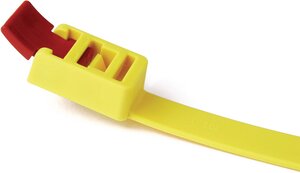 SpeedyTie (RTT750HR)
115-00000
SpeedyTie (RTT750HR)
115-00000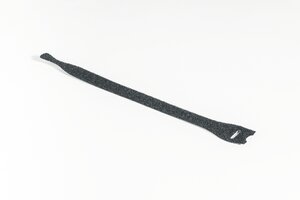 TEXTIE S
130-00012
TEXTIE S
130-00012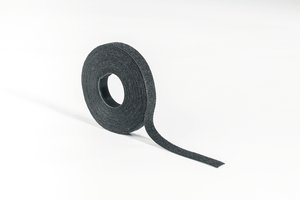 TEXTIE 5M
130-00020
TEXTIE 5M
130-00020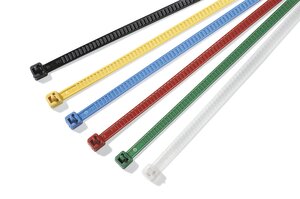 LR55R
115-00003
LR55R
115-00003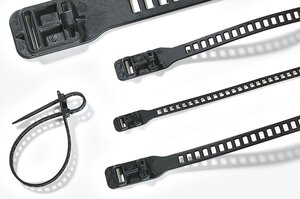 SRT1807
115-07189
SRT1807
115-07189



